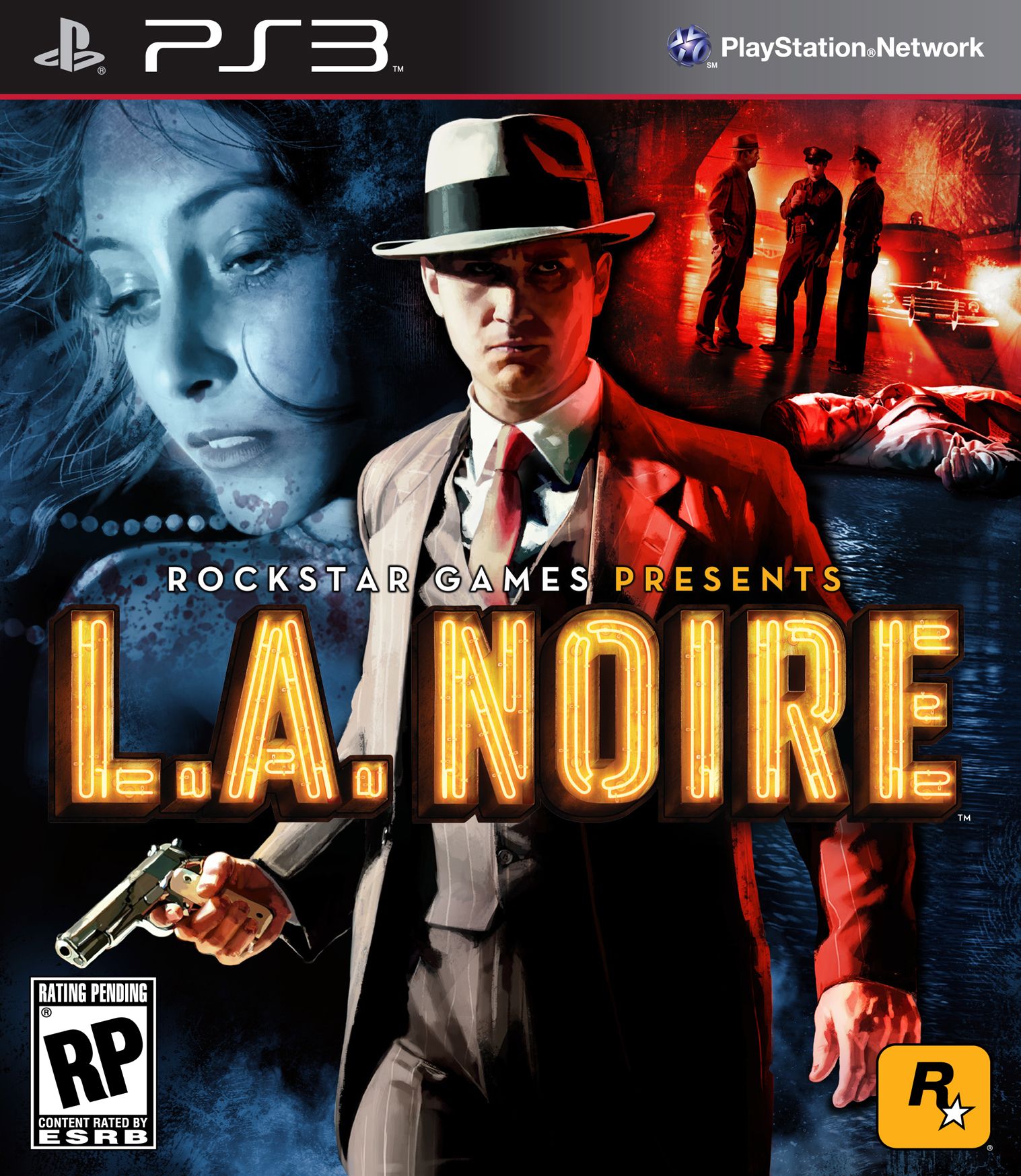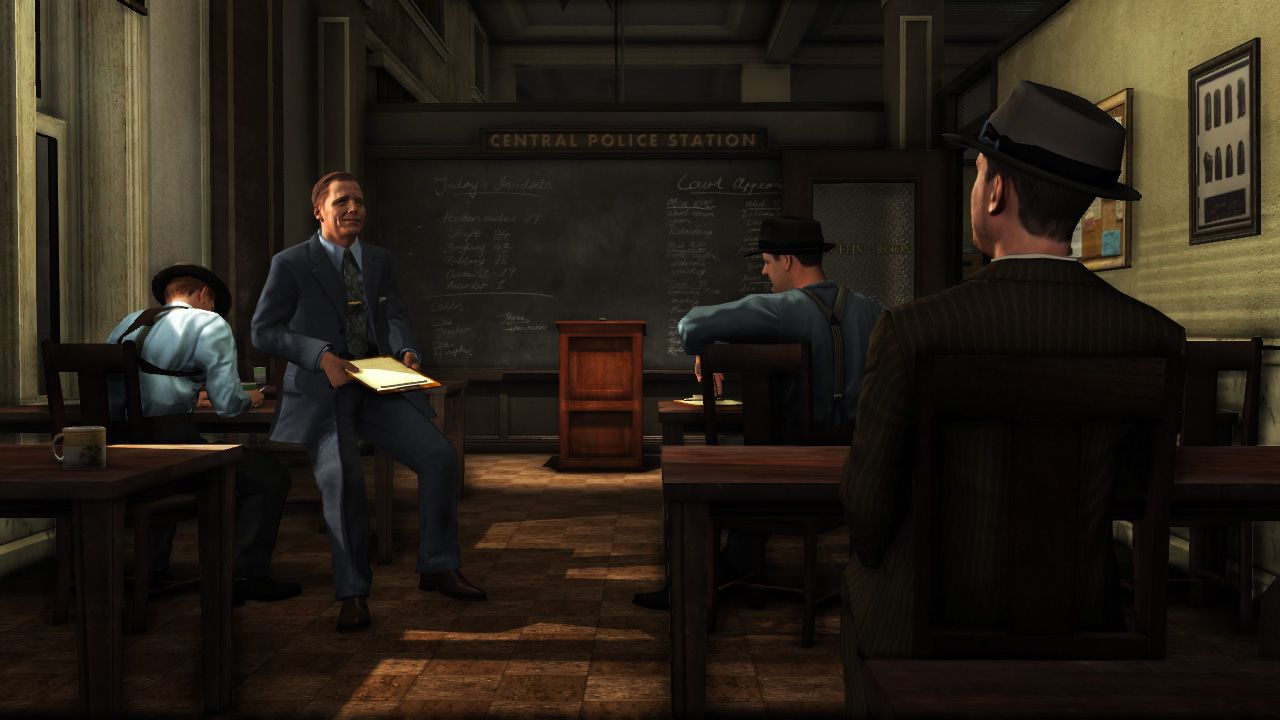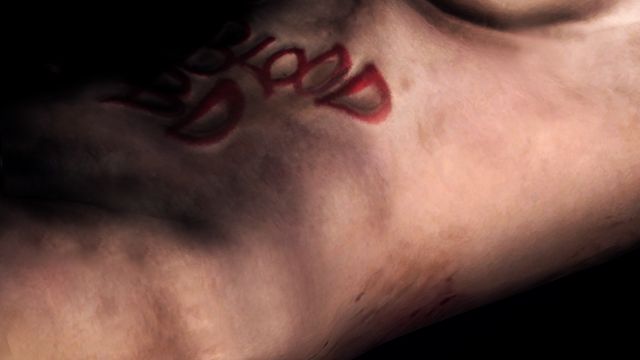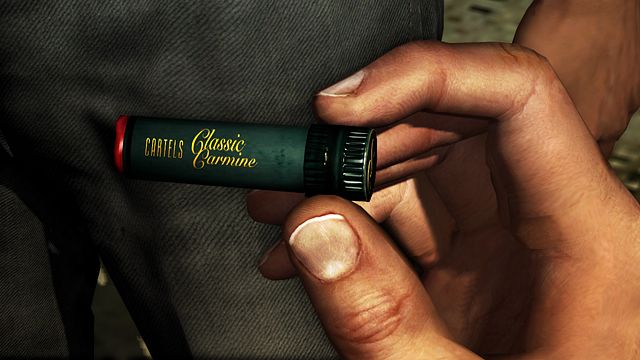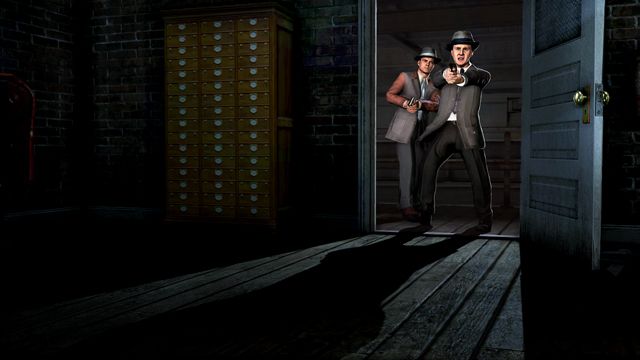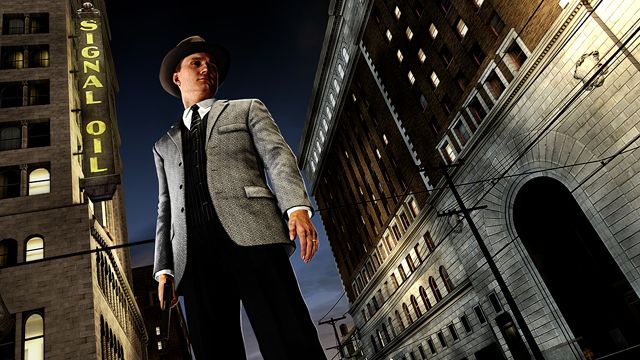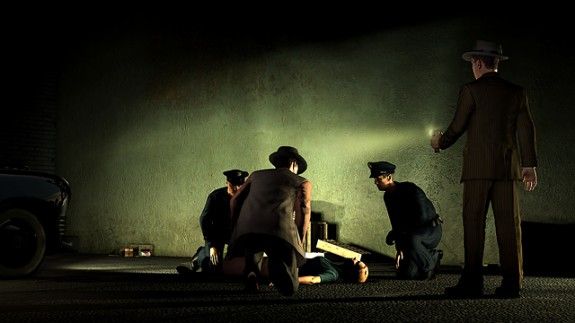Rockstar has established a reputation for producing cinematic titles that stain us with bold and unordinary characters in cyclopean open worlds subsidized by dramatic narratives; characters that easily grown on us, regardless of their rebellious or nefarious cause. They [Rockstar] continue to set a tone with each game they present us with, and Team Bondi's L.A. Noire isn’t an exception.
Unlike their previous titles, Rockstar and Team Bondi have set a completely different expression -- both visually and symbolically – with L.A. Noire. You’re no longer a proponent of notorious acts of violence. Instead, you’re a champion of the law: a cop. A cop with morals that’s determined to restore tranquility to the vicious streets of 1940s Los Angeles.
New constituents have been introduced making L.A. Noire far different from traditional games. Like any other Rockastar game, you will be exposed to the sandbox goodies like gunfights, open-world car chases and battles, and some form of system to judge your morality as an advocate of justice. But what sets this game apart is the overall pace and the philosophical involvement you will continuously have throughout the game. Your worries are no longer tediously focused on your ability to gun down people, but rather your mastery of human deception – your overall ability to read people and determine whether their facial expressions advertise some form of honesty.
Traditional games don’t focus heavily on the facial expressions of characters. Other elements add to the overall experience, making that feature inefficient. But what makes the emotional impact, as I’ve learned with L.A. Noire, much more personal is the expressions that characters give. The slightest wrinkle in a smirk can define whether the person is genuinely content, or mischievously hiding something. MotionScan, a brand new technology used in L.A. Noire, delivers a realistic cinematic experience brought forth by a group of well-known actors. Everything on their face, from a blink to a smile, is created from the actor; not a single piece of expression is decorated by an animator. You’ll find out quickly that the slightest disturbances which cause your eyes to move from the game will undoubtedly be a mistake. Everything that a character in L.A. Noire has to say doesn’t come from their vocal chords, usually. It’s their facial expressions, their eyes, their posture, that tells you whether or not they are feeding you deceit. And this is what sets L.A. Noire apart from anything you have ever played; this is where the game, rightfully, is uniquely astounding.
As a detective, you’re going to be thoroughly searching crime scenes for clues. You will question witnesses for answers or leads, which will encourage you to think much more like an investigator. Although it might sound simple, I can promise you that, unless you have the keen skills of a lie detector, it isn’t easy. I found it far more challenging to question, or even trust, the statement of a witness than anything else. Yes, the game’s protagonist, Cole Phelps, is a war vet held in the highest regards as one of the best case men during that time; but I found it pretty difficult holding that praise when the countless suspects that I interrogated were still accused falsely by my inability to effectively read their faces and/or body language.
You select questions from a handy notebook that Phelps carries around. After every question, your suspect responds accordingly. Then, after they have provided you with dialogue, you must choose to doubt, believe, or accuse them of lying. If you get it right, you’ll be able to get more clues; get it wrong, and they will offer less information. Getting things right will offer you perks as the game advances, offering you a better understanding of the suspect’s motivations. The worse you do, however, will make it much more difficult to obtain the truth. There’s no “game over” if you fail to catch a killer’s lie or miss an important clue. The baddie, instead, will gleefully escape the clutches of imprisonment if it’s pre-determined in the game’s story. The only time that the game will come to an abrupt end is if a fleeing suspect gets away from you, or – like any other game – you’re killed.
Although you have the ability to harass people in L.A. Noire, this isn’t the only thing you’ll be doing in the game. Remember, this is a sandbox/open-world game. You’re free to do as you please, pretty much. I found myself exploring the meticulously recreated world of 1940s Los Angeles, and taking in its antique historical beauty, or taking on more action-based missions. However, because it is an open-world game, don’t think that you’ll be able to run rampant in the streets and do outrageous things like in Grand Theft Auto (weird coming from Rockstar, right?). There are forty cases that come in as calls on the radio. No, they aren’t random; they’re single-scene missions where you’ll be serving the law in chasing after insane plebeians flaunting blunt objects to beat people with, bank robberies, or stalking criminals to their sanctuaries.
Mild distractions, aside from the aforementioned ones, are around if you have time to explore the vast city. Discovering cars and finding all of the famous Los Angeles locations will earn you points toward leveling up your rank. A new rank isn’t just a shiny new stripe, though. New ranks mean intuition points (which are spent to reveal clues and narrow choices when you’re interrogating suspects), hidden car locations, and even new clothes. This is where you pretty much scratch your “gamer” itch. It’s the morsel of L.A. Noire that is more “game” for those gamers who want to separate themselves from the main narrative from time to time. Although it sounds nifty, I felt that the game itself would have been bolder with more focus on the overall experience and less bearing for including traditional game elements that, at times, doesn’t fit with the overall façade and feel of L.A. Noire. Times when I’m just subdued and enchanted by the immersive world, only to be reminded that I am, in fact, playing a video game as nonessentials permeate my screen (e.g. scores which tally my lie-detecting ability).
L.A. Noire has moments where you’re just overwhelmed by the sheer brilliance of tasteful storytelling and cases that mold into an inhalation of astonishment. There are times, however, where the game just feels redundant and unsurprising. Unsurprising elements will become apparent, regardless of the twenty-one cases that exist, because of the fact that, at times, the game will drag and reprocess familiar drama. It became apparent, after a certain point, where I knew pretty much what to expect from the game. Here’s pretty much what I saw: I go into a crime scene, search for some clues that lead me to new locations in Los Angeles to check out. From that point, I was sure that I would end up chasing suspects in my car, or on foot through the claustrophobic alleys that gorge the city. After the suspect is apprehended, it leads to an interview with the suspect in the police station interrogation room, where it, eventually, will lead to an arrest.
When Rockstar’s new IP disregards the main blueprint which becomes tedious, it feels, and is, incredible. Doing things like solving riddles on Phelps’ homicide desk to uncover landmarks across Los Angeles, where the experience is just different and refreshing from the redundancies that plague L.A. Noire. It’s not to say that because the game does have its redundancies that it isn’t entertaining, because it definitely is.
The sense of realism within the performances will definitely leave you perplexed at times, as you take in the naturalness that fills your screen. The body language, the expressions, the mannerisms, the way eyes wander realistically when someone is scared – it’s these very ingredients that give L.A. Noire the realism of cinematography, and impulsive sensations that one feels with the game. It latches on to you like a parasite, injecting one of the best performances I’ve seen to date in a game. Sure, there are games that graphically surpass L.A. Noire all around. But the realism of L.A. Noire doesn’t come from its amazing textures or rending engine. It seeps from the contortions of the faces that give off life-like performances that lures your psyche into a world filled with faithful emotions that become a memorable facet.
But despite the amazing performances, a superb soundtrack, and top-tier dialogue, L.A. Noire didn’t leave me fully content. And I blame that more on the protagonist, Cole Phelps. See, Phelps is the apotheosis of what is the LAPD; and as the game progresses, you learn more about his past and who he really is. However, I wasn’t fond of his character because his story feels carelessly told. I wasn’t attached to him and didn’t care about him, which isn’t a great thing considering the protagonist is the character that the player should generally care for. His story just doesn’t feel genuine. For example, Cole has a wife he hardly talks about. Apparently, since it was the forties, and women were still somewhat mildly oppressed, her only reason for existence was to make sure Phelps had a hot dinner plate when he got home, cleaning, or because she was at some major airline working as an engine mechanic (Rockwell Rosie anyone?).
Like any other game, L.A. Noire has its issues. But how it measures against the competition is very much different. The core gameplay mechanics work flawlessly (driving, chasing people, aiming, taking cover, etc.); and the newer additions to the overall mechanics – such as the fundamental understanding of how to interrogate suspects – isn’t convoluted or difficult to grasp, to say the least. Although the wide variety of the components don’t come together in harmony to create something prodigious, there still is plenty happening that will leave you satisfied. Some people will embrace the game for not being an ordinary game – for being completely different. Others, though, might penalize the overall game for its slower-than-average stride.
I am conflicted with L.A. Noire sometimes because I, at certain moments, love the game, yet there are some flaws that can’t go without mention which pick at me. Superb performances make the game believable. You’re drawn in gripping your controller as certain scenes nurture your attention. At times, I found myself thinking of popcorn to accompany the theatric experiences that engulfed my TV. But there was something missing in L.A. Noire that, in the end, didn’t make the game as spectacular as one was hoping it would be. Would I dare say that it is something that people shouldn’t try? Absolutely not. It’s a Rockstar game. And if you know Rockstar, you know that they deliver quality products. L.A. Noire is a different take in gaming, storytelling, and gameplay. It’s a risk that Rockstar obviously took, without the strains of conventional game development holding them back. They took a chance at something brand new and succeeded in diversifying game narratives. It’s a breath of fresh air that will, undoubtedly, become a classic – something Rockstar is definitely known for creating.
-
Game: L.A. Noire
- Platform Reviewed: PS3
- Developer: Team Bondi
- Publisher: Rockstar Games
- Release Date: May 17, 2011
- MSRP: $59.99
- Review copy info: A copy of this title was provided to DualShockers, Inc. by the publisher for the purpose of this review.
LA Noire
- Released
- May 17, 2011
- Developer(s)
- Team Bondi
- Publisher(s)
- Rockstar Games
- ESRB
- M for Mature: Blood and Gore, Nudity, Sexual Themes, Strong Language, Use of Drugs, Violence

